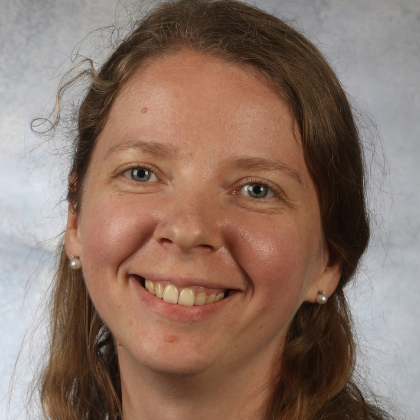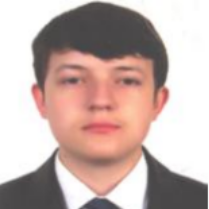International Journal of Intelligent Systems and Applications (IJISA)
IJISA Vol. 11, No. 8, 8 Aug. 2019
Cover page and Table of Contents: PDF (size: 680KB)
Structural Transformations of Incoming Signal by a Single Nonlinear Oscillatory Neuron or by an Artificial Nonlinear Neural Network
Full Text (PDF, 680KB), PP.1-10
Views: 0 Downloads: 0
Author(s)
Index Terms
Nonlinear neuron, artificial nonlinear neural network, coding of information
Abstract
Structural transformations of incoming informational signal by a single nonlinear oscillatory neuron or an artificial nonlinear neural network are investigated. The neurons are modeled as threshold devices so that the artificial nonlinear neural network under consideration are systems of nonlinear van der Pol type oscillatory neurons. The neurons are coupled by synaptic weight coefficients to endow the systems with the configuration topology of a chain or a ring. It is shown that the morphology of the outgoing signal – with respect to the shape, amplitude and time dependence of the instantaneous frequency of the signal – at the output of such a neural network has a higher degree of stochasticity than the morphology of the signal at the output of a single neuron. We conclude that the process of coding by a single neuron or an entire chain-like or circular neural network may be considered in terms of frequency modulations, which are known in Physics as a way to transmit information. We conjecture that frequency modulations constitute one of the ways of coding of information by the neurons in these types of neural networks.
Cite This Paper
Roman Peleshchak, Vasyl Lytvyn, Oksana Bihun, Ivan Peleshchak, "Structural Transformations of Incoming Signal by a Single Nonlinear Oscillatory Neuron or by an Artificial Nonlinear Neural Network", International Journal of Intelligent Systems and Applications(IJISA), Vol.11, No.8, pp.1-10, 2019. DOI:10.5815/ijisa.2019.08.01
Reference
[1]Sauer T. Reconstruction of dynamical systems from interspike intervals[J]. Phys. Rev. Lett., 1994, 72: 3811 – 3814.
[2]Marzantowicza W., Signerska J. On the interspike-intervals of periodically-driven integrate-and-fire models[J]. Journal of Mathematical Analysis and Applications, 2015, 423: 456 – 479.
[3]O. N. Pavlova A. N. Pavlov. Improving the quality of extracting dynamics from interspike intervals via a resampling approach[J]. Communications in Nonlinear Science and Numerical Simulation, 2018, 57: 221-230.
[4]Sangmin Song, Ji Ah Lee, Ilya Kiselev, Varun Iyengar, Josef G. Trapani, Nessy Tania. Mathematical Modeling and Analyses of Interspike-Intervals of Spontaneous Activity in Afferent Neurons of the Zebrafish Lateral-Line. Biophysical Journal, 2017, 112(3): 136a.
[5]Racicot D. M., Lonytin A., Interspike interval attractors from chaotically driven neuron models[J]. Physica D, 1997, 104: 184 – 204.
[6]Castro R., Sauer T. Correlation dimension of attractors through interspike intervals[J]. Phys. Rev. E 1997, 55: 287 – 290.
[7]Sauer T. Nonlinear dynamics and time series. Eds C. Culter and D. Kaplan. Fields Institute Communications. American Mathemtical Society, 1997, RI 11: 63 – 75.
[8]Hegger R., Kantz H. Embedding of sequences of time intervals[J]. Europhys. Lett. 1997, 38: 267 – 272.
[9]Castro R., Sauer T. Chaotic Stochastic Resonance: Noise-Enhanced Reconstruction of Attractors[J]. Phys. Rev. Lett., 1997, 79: 1030 – 1033.
[10]Jinming Liu, Jian Mao, Bin Huang, Peiguo Liu. Chaos and reverse transitions in stochastic resonance[J]. Physics Letters A, 2018, 382: 3071-3078.
[11]Pavlov A. N., Hramov A. E., Koronovskij A. A., Sytnikova E. Ju., Makarov V. A., Ovchinnikov A. A. Wavelet analysis in neural dynamics[J]. Advances of Physical Sciences, 2012, 182(9): 905 – 939.
[12]Tuckwell H. C. Introduction to theoretical neurobiology. Cambridge University. Press, Cambridge, 1998.
[13]Janson N. B., Pavlov A. N., Neiman A. B., Anishchenko V. S. Reconstruction of dynamical and geometrical properties of chaotic attractors from threshold-crossing interspike intervals[J]. Phys. Rev. E, 1998, 58: R4 – R7.
[14]Pavlov A. N., Sosnovtseva O. V., Mosekilde E., Anishchenko V. S. Extracting dynamics from threshold-crossing interspike intervals: Possibilities and limitations[J]. Phys. Rev. E, 2000, 61: 5033 – 5044.
[15]Pavlov A. N., Sosnovtseva O. V., Mosekilde E., Anishchenko V. S. Chaotic dynamics from interspike intervals[J]. Phys. Rev. E, 2001, 63: 036205.
[16]A. N. Pisarchik, G. Huerta-Cuellar, C. W. Kulp. Statistical analysis of symbolic dynamics in weakly coupled chaotic oscillators[J]. Communications in Nonlinear Science and Numerical Simulation, 2018, 62: 134-145.
[17]John S., Bay and Hooshang Hemami. Modeling of a neural generator with coupled nonlinear oscillators. IEE Transactions biomedical engineering V, 1987, 34: 297 – 306.
[18]T. Shimoia, K. Mizutanib, D. Kojimaa, Y. Kitamurac, K. Hottaa, H. Ogawad, K. Oka. Identification of oscillatory firing neurons associated with locomotion in the earthworm through synapse imaging[J]. Neuroscience, 2014, 268: 149 – 158.
[19]Pavlov A. N., Pavlova O. N. Applications of wavelet analysis in the study of the structure of pointwise processes[J]. Letters to the Journal of Technical Physics, 2006, 32: 11 – 17.
[20]Suhakov V. Y. Fundamentals of synergetics. Kyiv: Oberehy, 2001.
[21]Lytvyn V., Peleshchak I., Peleshchak R. The compression of the input images in neural network that use the diagonalization method for the matrices of synaptic weight connections[C]. 2nd International Conference on Advanced Information and Communication Technologies (AICT), 2017, 66 – 70.
[22]Lytvyn V., Peleshchak I., Peleshchak R. Increasing the speed of detection and recognition of computer attacks in combined diagonalized neural networks[C]. 4th International Scientific-Practical Conference “Problems of infocommunications. Science and Technolohy”, 2017, 152 – 155.
[23]Lytvyn V.V., Peleshchak I.R., Peleshchak R.M., Holoshchuk R.O., Detection of multispectral input images using nonlinear artificial neural networks[V]. 14th International Conference on Advanced Trends in Radioelectronics, Telecommunications and Computer Engineering, TCSET, 2018, 119 – 124.
[24]Bogolyubov M. M., Yu. O. Mytropolsky. Asymptotical methods in the theory of nonlinear equations. Moscow: Nauka, 1992.
[25]Bozhokin S. V. Continuous wavelet transformation and exactly solvable model for non stationary signals[J]. Journal of Technical Physics, 2012, 82: 8 – 13.
[26]Grossmann A., Morlet J. Decomposition of Hardy functions into square integrable wavelets of constant shape[J]. SIAM. J. Math. Anal., 1984, 15: 723 – 736.
[27]Chui C. K., Wavelets: a mathematical tool for signal analysis (SIAM Monographs on Mathematical Modeling and Computation). Philadelphia: SIAM, 1997.



